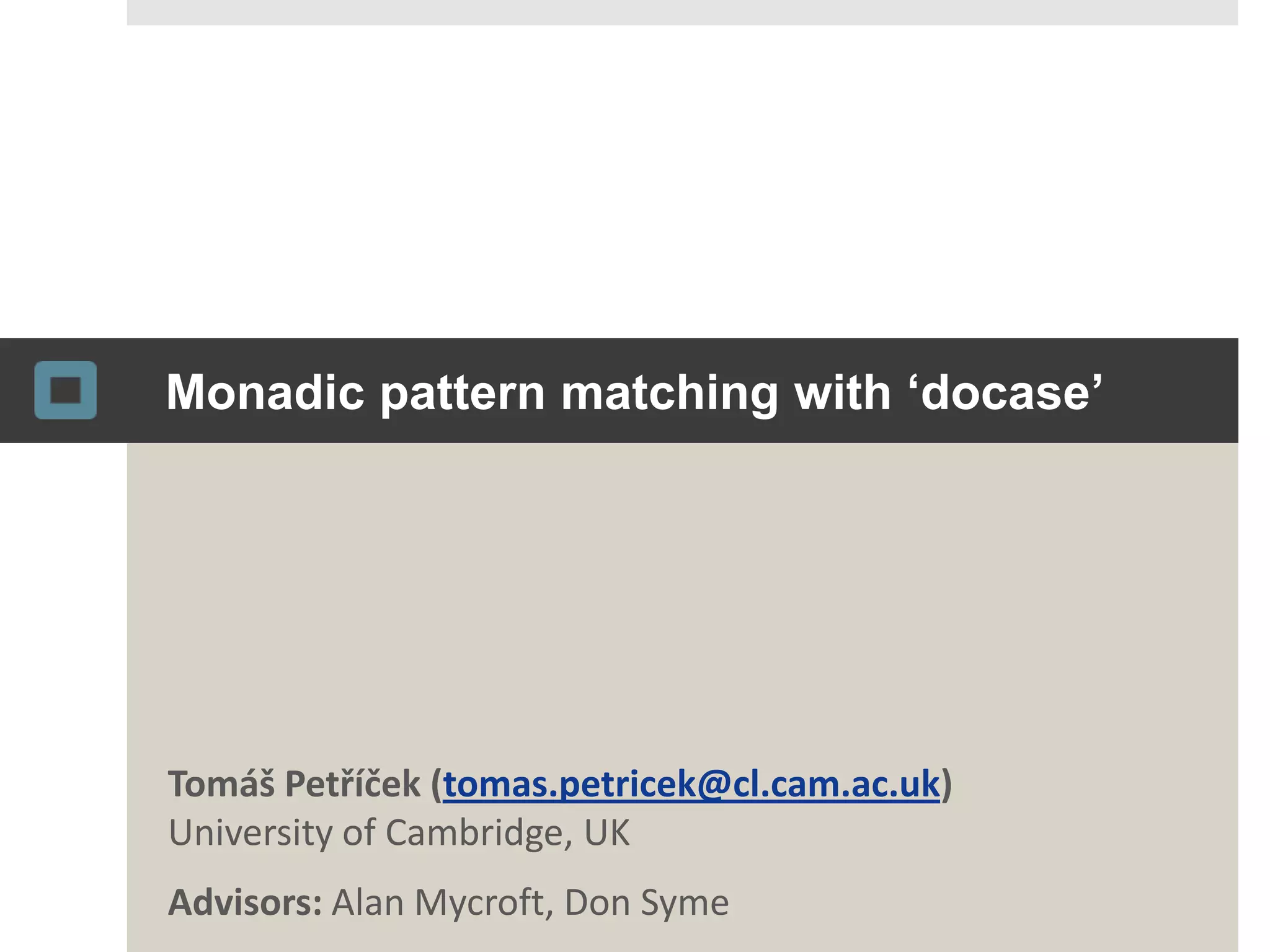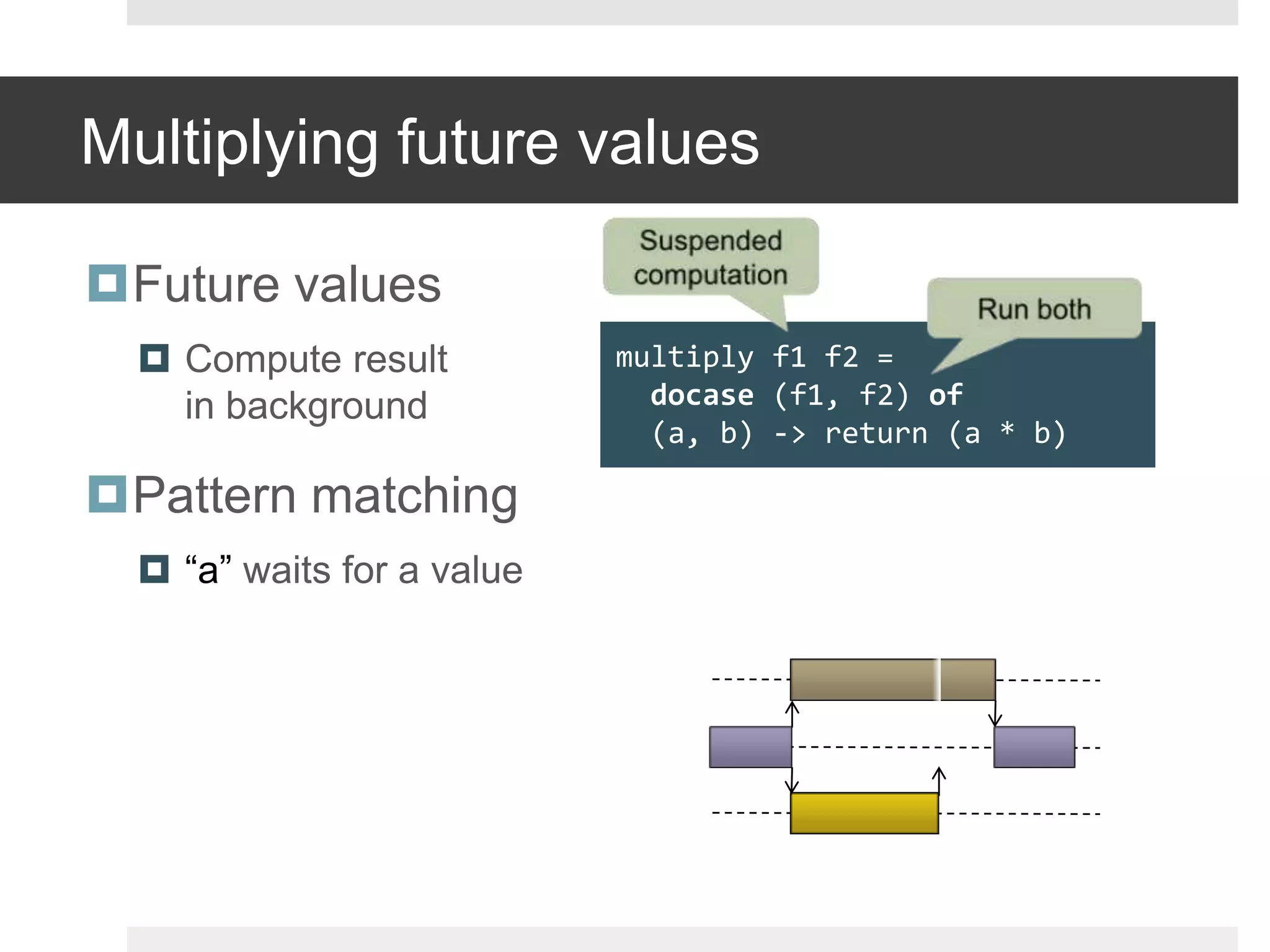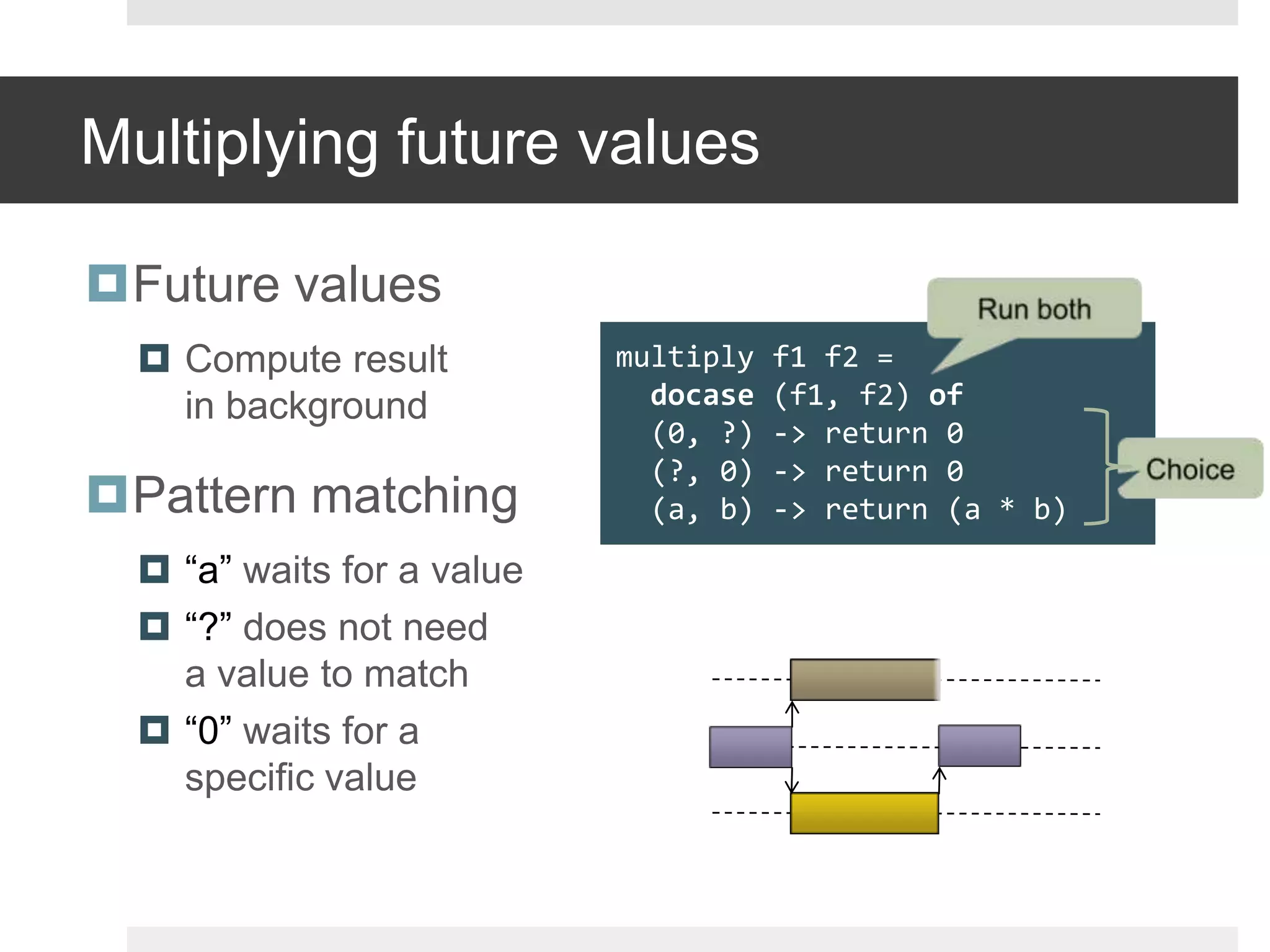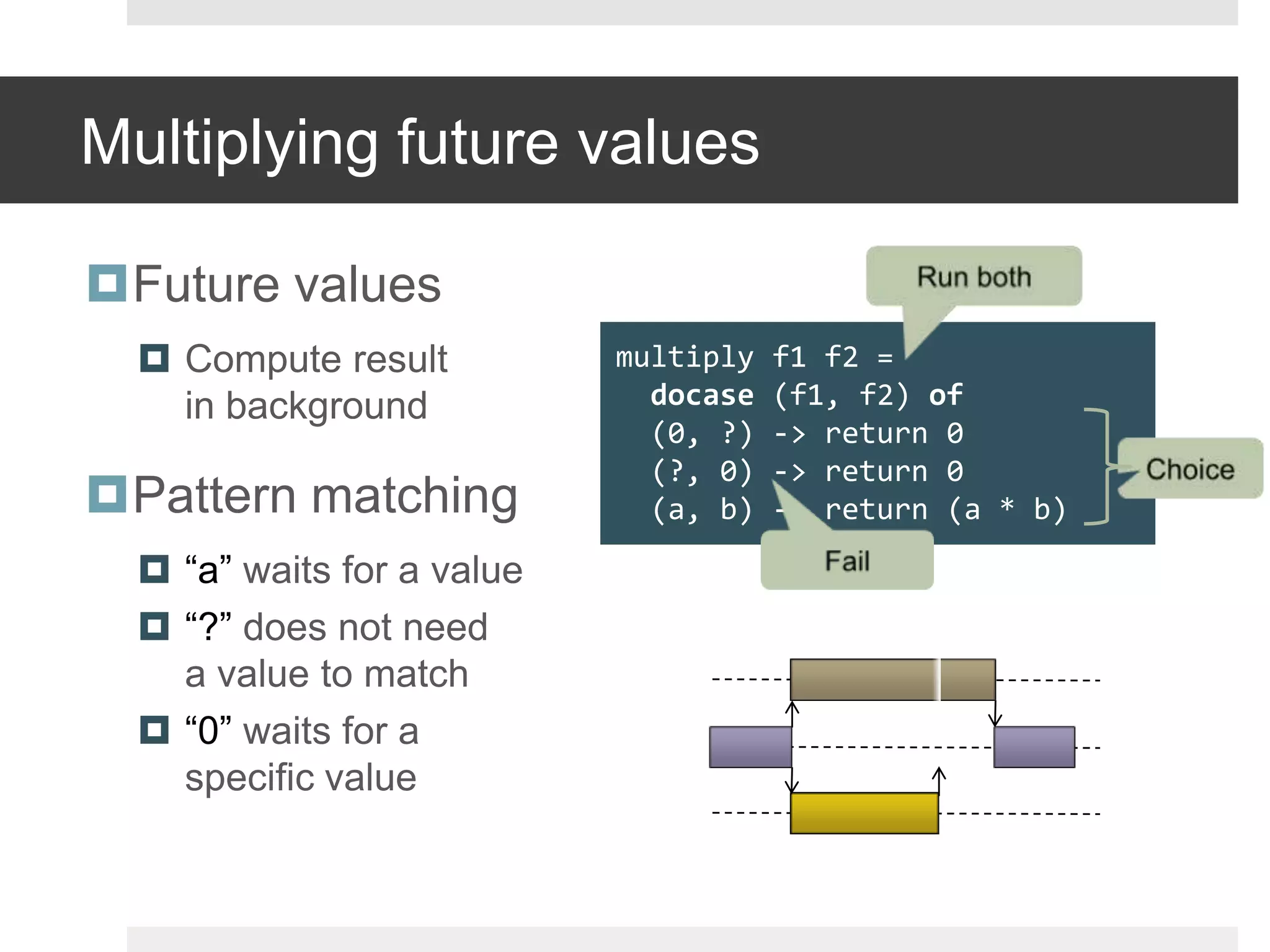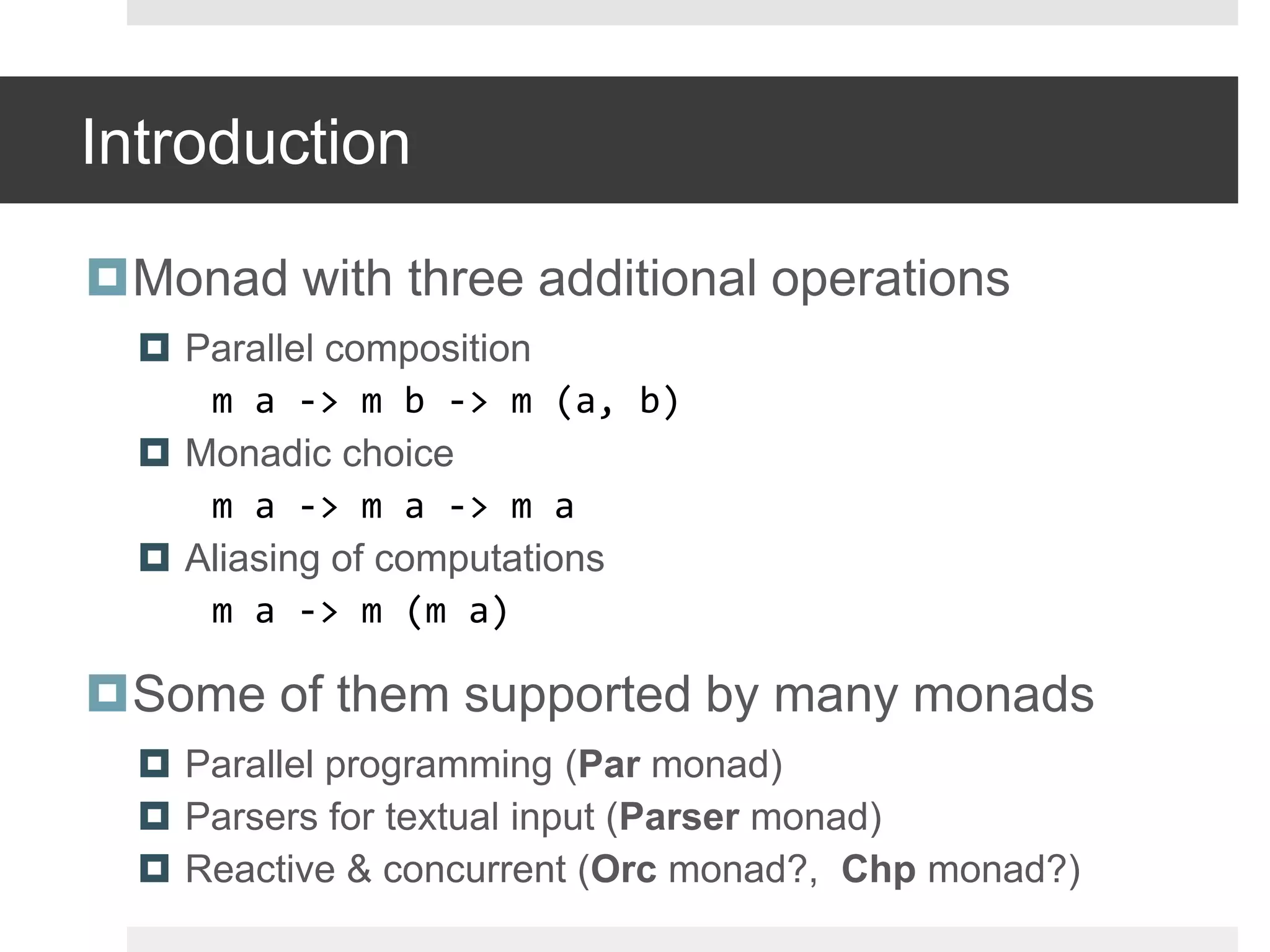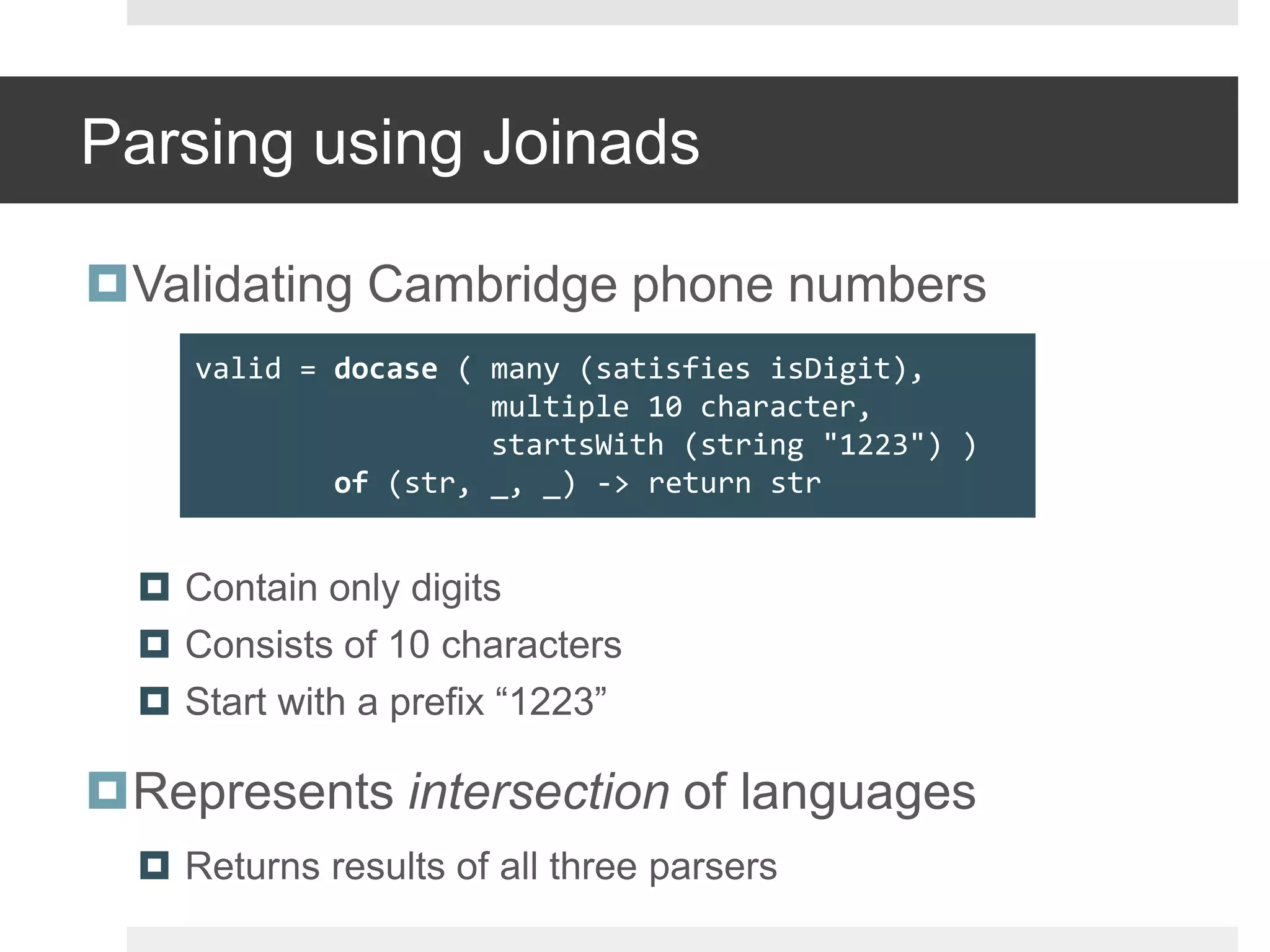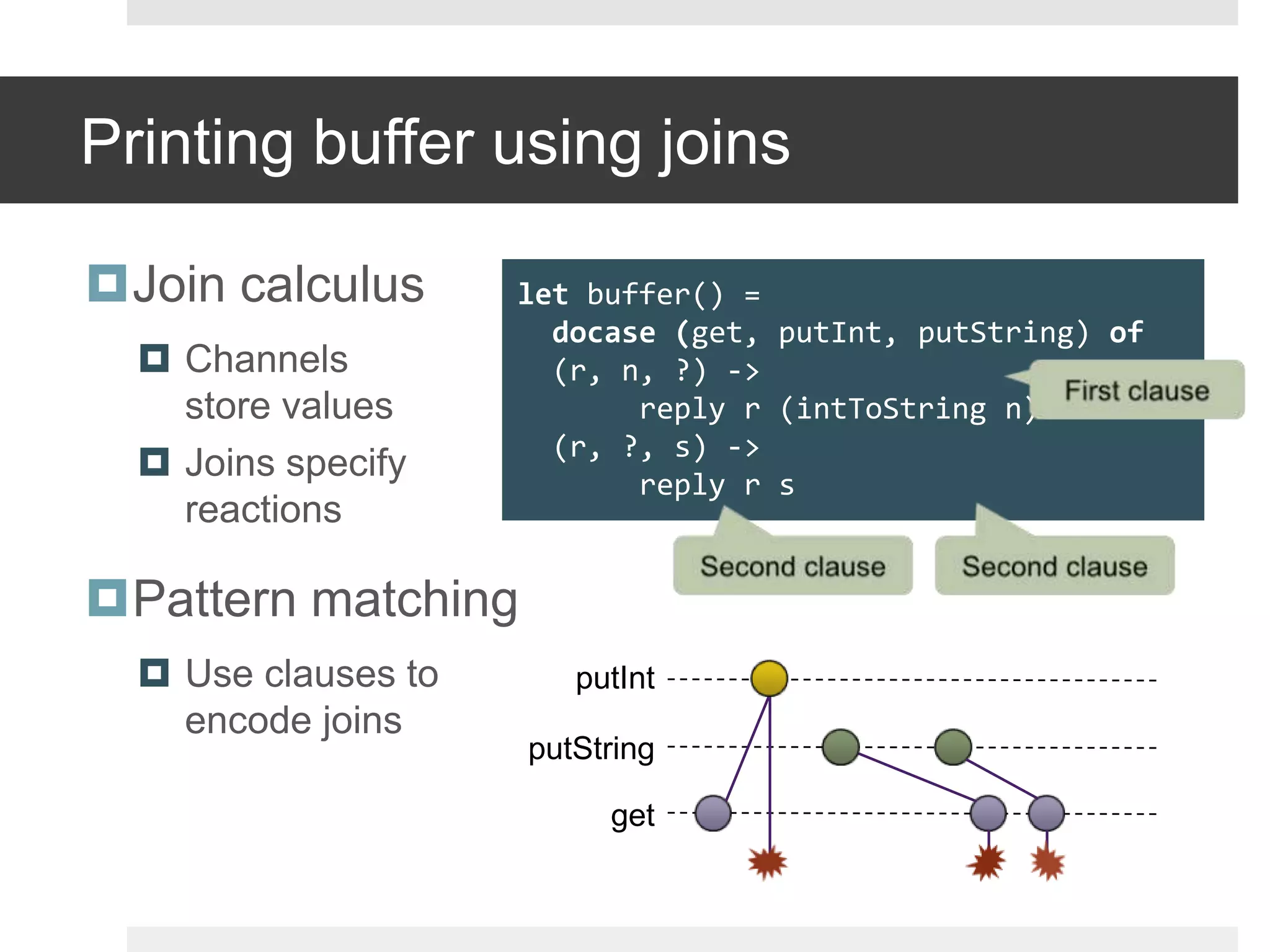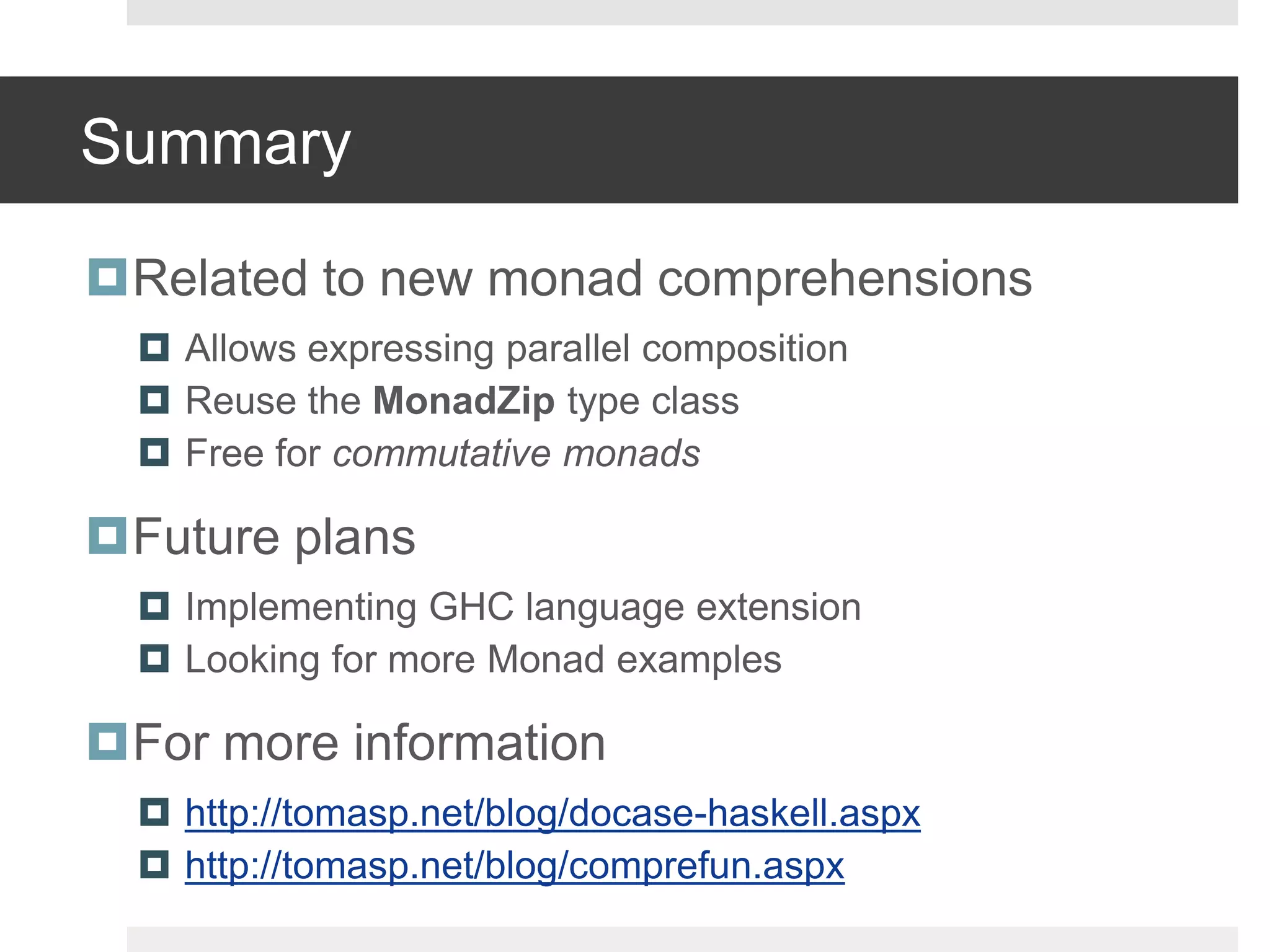The document discusses the monadic pattern matching using 'docase', introducing extensions to the monad interface for handling effectful computations in parallel and concurrent programming. It addresses additional operations like parallel composition and monadic choice, along with usage examples, such as validating phone numbers and managing printing buffers. Future plans include implementing GHC language extensions and exploring more examples of monads.
